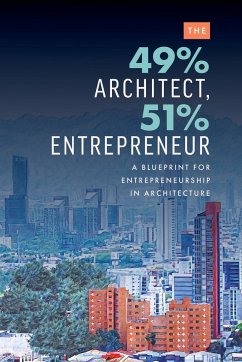Nicht lieferbar

Emerging Practices
Designing in Complexity
Herausgeber: Ma, Jin
Versandkostenfrei!
Nicht lieferbar
-Presents a preliminary endeavor in inquiring how designers could play a role in designing for complex sociotechnical systems -Offers an example of design as a discipline in a Chinese design school that is grounded in thinking and practice addressing local issues while being actively connected globally In 2009, the College of Design and Innovation, Tongji University was established. The transition from a former Art and Design Department - steeped in the Bauhaus tradition - to an independent school named 'Design and Innovation' attests to the university's vision to move design education and res...
-Presents a preliminary endeavor in inquiring how designers could play a role in designing for complex sociotechnical systems -Offers an example of design as a discipline in a Chinese design school that is grounded in thinking and practice addressing local issues while being actively connected globally In 2009, the College of Design and Innovation, Tongji University was established. The transition from a former Art and Design Department - steeped in the Bauhaus tradition - to an independent school named 'Design and Innovation' attests to the university's vision to move design education and research beyond an artefact-centered crafts tradition and toward a design discipline that drives innovation at the intersection of business, technology, and the humanities. Every autumn since 2012, the Tongji University College of Design and Innovation has organized a small design research and education conference titled 'Emerging Practices'. The Emerging Practices Conference (EPC) witnesses the developing trajectory of design as a discipline in a Chinese design school that is grounded in thinking and practice addressing local issues and is in the meanwhile actively connected globally. A small group of design scholars and educators, who gathered at the EPC in 2014, announced their intention to explore how design can address the complex issues the world faces today. They called their agenda 'DesignX', using 'X' to refer to the turbulent, unknown future of design. The initial DesignX Manifesto has triggered a deeper interest in asking how designers could play a role in designing for complex sociotechnical systems. This anthology selected viewpoint essays and cases, presented at the EPC 2016, as a preliminary endeavor to understand the challenges and opportunities of designing in such complex systems as healthcare, education, public sector innovation, food and culture, and so on. It is inspiring to see that our drive to reform design education and research - and situate design within a shifting social, economic, and technological context - has attracted the attention and participation of a wider community. Our common challenges arise out of a need to reform design education, bridge design research and practice, design for social well-being, and target sustainability on a planet with limited resources. Contents: Introduction; Viewpoints; Globalization, and the Effective Supply of Design Education; Design and the Economy of Choice; The Expanding Scope and Paradigm Shift of Design; Making Things Happen; The Ethics of Ignoring Rashomon; Chicken Run; Information Visualization; Design, Work, and Intelligence Cases; Embedding Designers in Government Innovation Teams; Policy Design to Improve the Delivery of Old Age Security in Canada for Vulnerable Seniors; Design Research and Practice for the Public Good; Movable Feasts; Design for Human-Robot Acceptability; DREAM Complexity.













